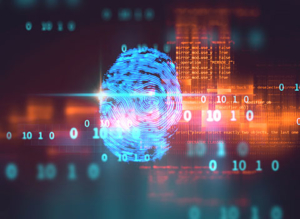2017 Was the Worst Year for Identity Theft EVER!
Javelin Strategy & Research recently released its Identity Fraud Study, and it revealed that the number of identity theft victims rose by 8% in 2017 when compared to 2016. That’s almost 17 million people, which is a record high. Despite more information and industry efforts to make people aware of these practices, $16.8 billion was stolen due to ID theft in 2016.
 The study also showed a shift in how ID theft fraud was being done. Credit card accounts were the most common targets for new account fraud, we also see that there is a big uptick in other accounts being targeted, including PayPal accounts and e-commerce merchant accounts. We can also see that more than 30% of consumers in the US were notified that their information was part of a data breach, which is 12% higher than the year before. Social Security numbers also seem to be a favorite of ID thieves, as are credit card numbers. We also see that due to these breaches, consumers are becoming less trusting when it comes to companies and financial institutions that are storing personal data.
The study also showed a shift in how ID theft fraud was being done. Credit card accounts were the most common targets for new account fraud, we also see that there is a big uptick in other accounts being targeted, including PayPal accounts and e-commerce merchant accounts. We can also see that more than 30% of consumers in the US were notified that their information was part of a data breach, which is 12% higher than the year before. Social Security numbers also seem to be a favorite of ID thieves, as are credit card numbers. We also see that due to these breaches, consumers are becoming less trusting when it comes to companies and financial institutions that are storing personal data.
The Trends
There were four noteworthy trends that were also found in this study:
- There was a Record High Rate of Identity Fraud – The study shows that almost 7% of all consumers were victims of ID fraud. This was almost a million people from 2016. This was mostly due to more account takeovers and more instances of fraud.
- Account Takeover Has Grown – One of the most shocking things found in this study is that account takeover has tripled when compared to 2016 and has reached a four-year high. This is a 120% increase. It was also noted that the average victim had to pay an average of $290 out of pocket to solve these issues, and consumers spent more than 62 million hours trying to work these issues out.
- Scammers Target Online Shoppers – The study also shows that people who shop online are most at risk of becoming a victim of fraud.
- Scammers are More Sophisticated – Finally, the study showed that fraudsters are more sophisticated than ever before, and they use more complex methods than ever before.
Finally, the Identity Fraud Study did something new this year, too. It looked at the way news of data breaches has affected consumers. About 63% of people who responded say that they were “very” or “extremely” concerned about becoming a victim of a data breach.
Robert Siciliano personal security and identity theft expert and speaker is the author of Identity Theft Privacy: Security Protection and Fraud Prevention: Your Guide to Protecting Yourself from Identity Theft and Computer Fraud. See him knock’em dead in this Security Awareness Training video





























